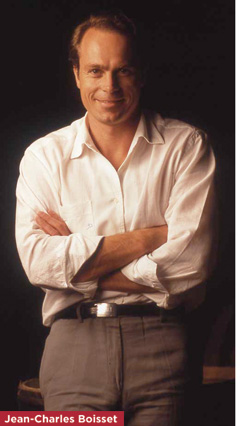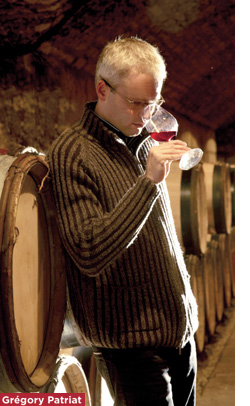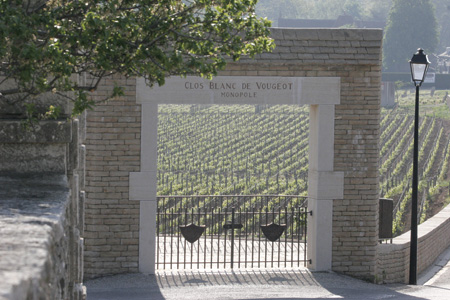Winegrowers’ portraits Burgundy
boisset, la Famille des Grands Vins
burgundy conquers the world
As from the creation of Boisset, founder Jean-Claude Boisset explored the world, first by exporting Burgundy wines, then by taking interest in other vineyards of France and elsewhere. Still with the same philosophy: ally tradition and innovation.
 A conquering spirit
A conquering spirit
From the beginning, Jean-Claude Boisset never ceased conquering the world. He wanted to be a merchant, he became one. Starting in Burgundy (at the age of 18) with four appellations, he soon got other appellations and exported his wines. First to Europe, then all over the world; in 1974, export already represented 1/5 of the turnover. In the 80s, the house Boisset settled in the United States and became the first French wine merchant and maturer to enter the secondary market of the stock exchange.
In 1999, the group reached a turning point by choosing to reposition all its wines uprange. Jean-Claude Boisset created Domaine de la Vougeraie that gathers all the domains purchased by the family in 1964, covering 27 Burgundy appellations and creating a single excellence signature. In 2002, he hands over the reins of his flagship brand Jean-Claude Boisset to a talented vinifier, Grégory Patriat, who will strive for the continuous enhancement of the wines by looking for supplies of elite grapes.
The renewal
Countercurrent house, it especially initiated since 1999 the concept of “viniculture” and turned the métier of merchant and maturer into vinifier, the one who breeds wine. Link between the vine and the wine, he is the one who accompanies the grapes from the vine stock to the wine, he is the one who will vinify, blend, market. He will keep a close eye on the care provided to the vines by the wine growers. He also carries the culture, the knowledge of the wine and its history.
In the meantime, the family defines a “new trade”: refocusing on Burgundy, rapprochement with the viticulture, seeking for the ideal vineyard thanks to a by-plot follow-up all year long thanks to close partnerships with wine growers for exceptional grapes and hand-crafted cuvées.
In the early 90s, the group takes interest in other regions of France and settles in Languedoc-Roussillon, the Rhone valley, the Beaujolais, with the will to be as close as possible to all the different terroirs that exist in the country. Sparkling wines also enter the group. With its first advertising campaigns, its extension in Canada and the United States, a new era starts for the family company that decides to become Boisset La Famille des Grands Vins. Now, 540 wine growers, with 2,200 hectares, participate in its success.
The United States
In California, the acquisition of DeLoach Vineyards at Sonoma in 2003 then Raymond Vineyards in Napa Valley in 2009 and at last the historical Buena Vista, the oldest winery in the region, sign Boisset’s commitment on the other side of the Atlantic Ocean and its Franco-American double cultural identity. Jean-Charles Boisset transforms on a long-term basis these estates that become references: DeLoach for the growing of Pinot Noir with the Burgundy method and its vineyard conducted following the Ecocert-certified biodynamics principles, as well as the 81 hectares of Raymond.
Open to the public, these houses offer a vision free of complex of the wine world with made-to-measure visits, theme tastings and an impressive amount of events that enable to have fun and learn at the same time, to discover the wine universe in an original and often wry way, thank to which Boisset Family Estates have been awarded many prizes.

 Nearness and respect
Nearness and respect
oF the environment
Despite this international dimension, La Famille des Grands Vins tries to remain close to each estate, but above all to each terroir its wines stem from. The philosophy that has been followed since the turning point in this success story is to aim at excellence, in the respect of the terroir and the environment to settle in a sustainable future.
According to this eco-friendly approach, the group launched in 2005 a new wine combining quality and preservation of the planet. Vintage wines in recyclable cartons! Aware that they shake up the codes, French Rabbit has first been sold in America in 2005, then in France in 2007 only.
To ease the legibility of its wines, Boisset has classified its offer in three families: the Craft and Terroir domains; the International Signatures; the Historical Houses.
The first include the estates that produce exceptional wines, but also vodka, stemming from Chardonnay and Pinot Noir, that carry around the world Boisset’s savoir-faire in excellence. They all practise sustainable farming, borrowing from the principles of biodynamics. For example, Domaine de Vougeraie; Jaffelin, specialist of the most traditional Burgundy wines, with wines that are fruity, typical, with a fresh and natural acidity; Jean-Claude Boisset, a modern and requiring house with wines that shake up the traditions. That is where Grégory Patriat, elected Young Vinifier of the Year by the Wine Innovation Awards in 2009 and best vinifier by RVF in 2012, works. And at last Ropiteau Frères whose activity and development is concentrated on Meursault and its gold triangle. Also Château de Pierreux in the Beaujolais.
The International Signatures represent the houses that are strongly rooted in the history and original tradition and that have gained a wide international distribution: Bouchard Aîné & Fils, J. Moreau & Fils, the Crémant de Bourgogne Louis Bouillot, and Antonin Rodet and his 90-hectare vineyard in Mercurey.
At last the Historical Houses are those that rely on a traditional savoir-faire perpetuated since several generations with a regional distribution. Among them, the sparkling wines Grandin, 100% traditional method in the Loire; Mommessin whose vocation is to establish the Beaujolais wine as a noble wine with a production that respects the vine and the grapes. But also houses in the Languedoc with an iconic brand, Fortant de France, created by the Skalli family at the same time as varietal wines à la française, and in the Rhone valley with Bouachon at Chateauneuf du Pape and Bonpas.
A wealth of houses and estates that shows how much Jean-Claude Boisset had the courage and daring to build future on the basis of uncompromising quality.

Trust in the future
Recently, the group celebrated the 20th anniversary of its sparkling wine segment. It now represents 10.5 million bottles, out of which 2.5 million of Crémant de Bourgogne of the flagship brand Louis Bouillot, purchased in 1997. The goal of the house is to reach 4 million bottles of Crémant. To do so, in 2014 it doubled the capacity of its fermentation cellar in Nuits-Saint-Georges and does not hesitate to sign long-term contracts of 10 or 15 years to encourage wine growers to plant grape varieties especially for Crémant de Bourgogne, and supply grapes.
To understand Boisset la Famille des Grands Vins’ approach, take some time to visit the Imaginarium museum in Nuits-Saint-Georges. Showcase of the house’s wines, it also is a beautiful
museum that proposes exhibition, sensory tour and tastings.
Sylvia van der Velden
www.boisset.fr A conquering spirit
A conquering spirit
 Nearness and respect
Nearness and respect